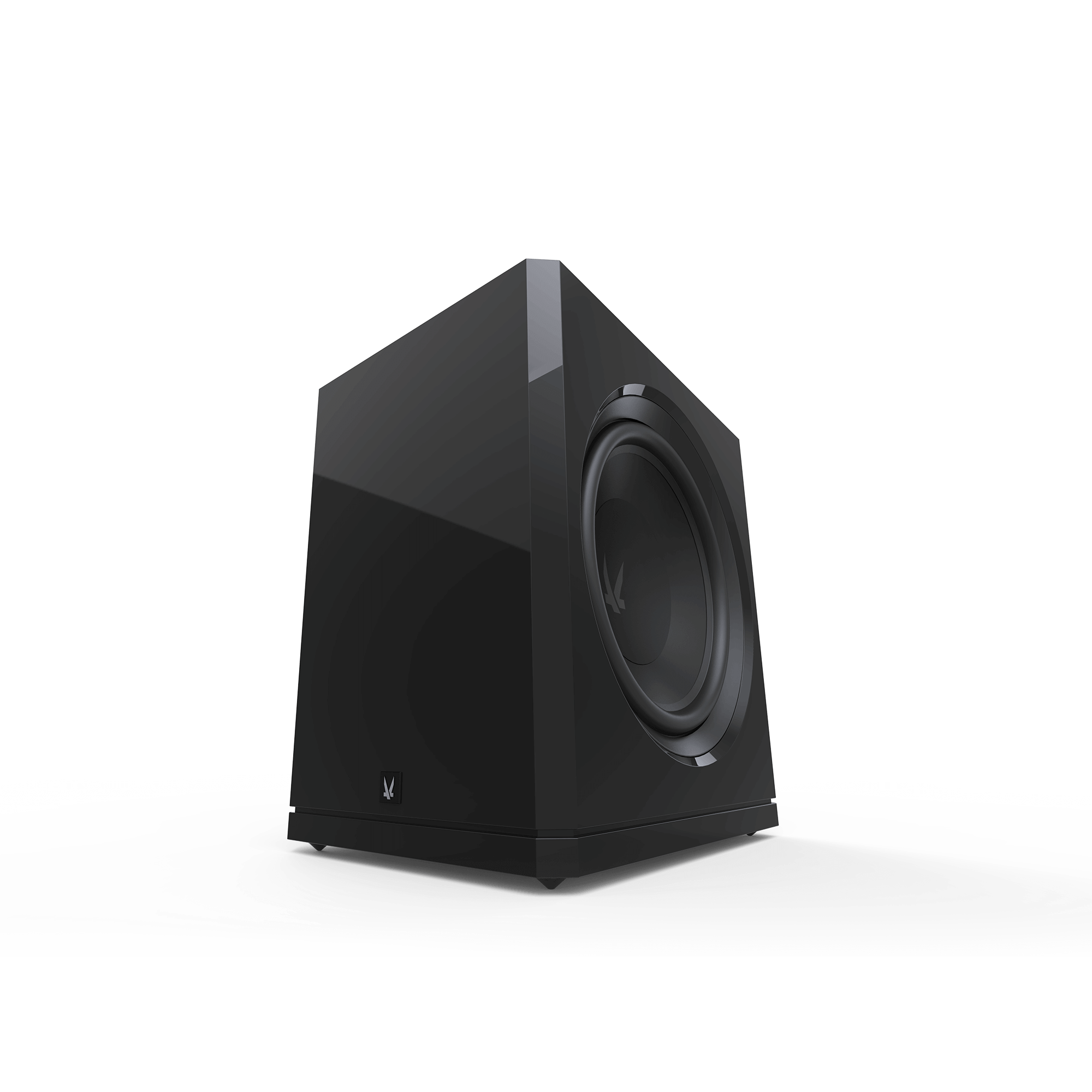AT THE TOP OF ITS CLASS
“FOR THE SIZE IT PRODUCES IMPRESSIVELY TIGHT AND DYNAMIC SOUND.”
“EXCELLENT VALUE FOR MONEY.”
TOP OF ITS CLASS
In the last issue we tested Arendal Sound’s sturdy shelf speaker, the 1723 Monitor. The manufacturer’s product line-up also has interesting subwoofers, from which we chose the Model 1 to the current test, representing the mid-range price.
The Norwegian Arendal Sound sells its products straight to consumers. This type of distribution model together with rational design and plain construction are ways how the company has strived to make their products more affordable than the competition. 1723 Subwoofer 1 is Arendal Sound’s smallest out of the four available bass speakers. It’s still no lightweight, it weighs almost 25 kilos. By appearance and finish the Subwoofer 1 is uncluttered clean and doesn’t draw attention. The element is shielded with a round metal grill covered with black fabric that attaches with magnets. There’s been no bargaining on the robustness of the housing because it’s made out of dense hdf-plate, and for example the installment plate of the element is 50 millimeters thick.
13,8 INCHES
The housing is closed by structure. Arendal has chosen this principle, so that the Q-value would be small and ringing after the signal stops would be as short as possible. An additional argument is that the closed housing’s steepness of 12 decibels per octave downward bass response fits together suitably with the fact that a room’s bass boost increases at the lowest frequencies the same way by average.
The element is 13,8 inches which means that its’ diameter is about 35 centimeters. The cone is a mix of paper mache and fiberglass. It’s said to utilize the paper mache’s excellent rigidity to mass ratio, and the strength and dampening features of fiberglass. The voice coil is copper coated aluminum. The goal is to combine the light weight of aluminum and the electrical conductivity of copper.
Under the dust cap and on the inner suspension (on the spider), there are cooling outlets that prevent signal compression due to overheating and increase power handling capacity. The outlets also improve the linearity of the cone movement, which decreases distortion. The low-pass filter is Linkwitz-Riley type, steepness of 24dB/octave, and its’ crossover frequency is adjustable between 40 to 160 Hz. The filter is possible to bypass if the user wants to use a home theater amplifier’s own bass control.
There’s two different frequency curve options available, EQ1 and EQ2. The former is intended for broad frequency range play, and when using it the amplifier has an electrical bass boost that lowers the lowest frequency. In the EQ2 setting the signal is directed to the element without a boost. It suits smaller rooms, where the lowest frequencies can otherwise get too heavy. The phase can be set without a step from zero to 180 degrees.
In addition to rca-connection, balanced xlr is available (also right next to it xlr-output for linking). The subwoofer turns on automatically when it receives a signal, but the electronics can be turned on by switch too. Measurements show that Arendal Subwoofer 1 goes down to about 18 hertz (-6dB), when the crossover frequency is set to its’ lowest position and the EQ-switch is set on 1. On the EQ2-setting the level of the lowest frequencies decreases about 8 decibels at a maximum, but the lower limit frequency only goes up a few hertz.
The crossover frequency adjustment range is broad enough, and the markings on the scale are quite accurate. As usual the lower limit frequency goes up if the crossover is set higher. Bypassing the filter gives the exact same result as the maximum adjustment of the filter.
LISTENING REVIEW
Mauri Eronen: Where juicy bass is already produced with the (Arendal) shelf speakers, the subwoofer brings posture and ease to the sound. Bass patterns progress with more ease, even though there does appear strong rumble with extremely low frequencies due to the listening room. Despite the fairly high 100Hz crossover, the subwoofer felt like it vanished unheard when listening to light chamber jazz, but got the acoustic recording’s stereo image to sound much wider. Nevertheless the more open soundscape didn’t manifest itself as less accurate positioning, only less dry. Actual increase in bass level wasn’t detected, more like calming down of the upper bass. In the drum solo in Take Five the amount of dynamics and the ease of all other sound frequencies increased to the power two.
Compared to the already old, but good standard compared to its’ size, the BK Monolith, the Arendal’s tone is clearly more precise and punchier, but at the same time more lusciously pleasing. Partly the reason for this is the absence of all redundant sounds, such as whiffs and puffs even with challenging material. Where a shelf speaker’s speed runs out when playing Infected Mushroom, the subwoofer is just starting to warm up. Especially in its’ size range its’ tight but dynamic sound impresses.
Associated Equipment: Aurelia Magenta shelf speakers and a Pioneer VSX-922 AV receiver. The high pass filter on the main speakers was set to 100 Hz, and the subwoofer’s own crossover was bypassed. Room calibration of the AV receiver was not in use.
CONCLUSION
Arendal Sound’s smallest subwoofer is externally quite bald but no-nonsense, and rationally constructed. Its’ frequency range reaches low and is tuneful. Thanks to the closed enclosure, there are no additional sounds due to air flow, nor does the subwoofer localize as a separate sound source. When the sound also feels effortless and the dynamics are in control, the result is an outstanding product for the price.
- Accurate playback
- Good sound pressure reserves
- Doesn’t localize as a sound source











